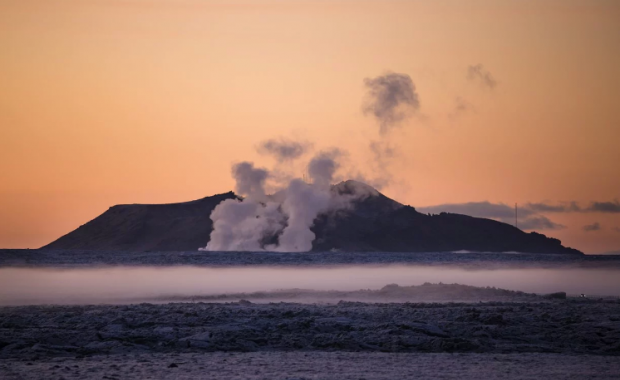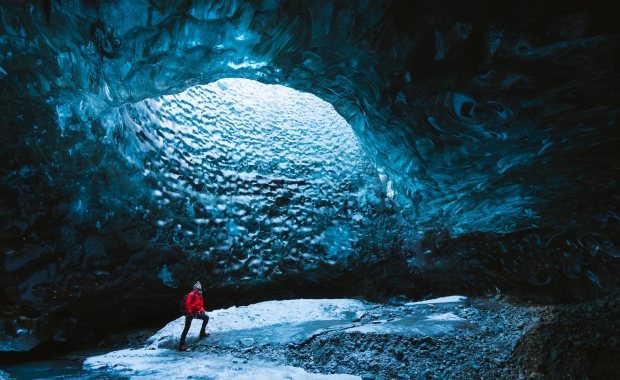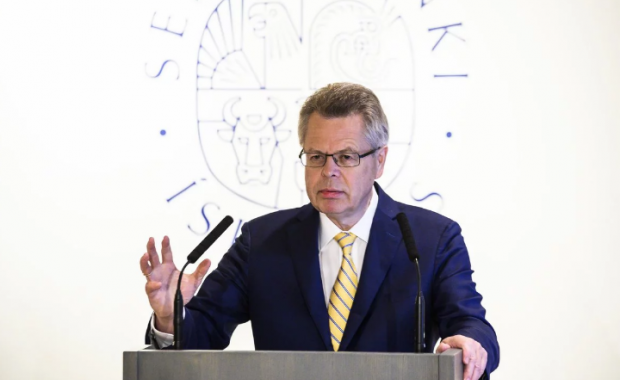The average total income of Icelanders, 16 years or older, in 2017 was 6.4 million ISK (60,000 USD/51,000 EUR). The median income in 2017 was 5.0 million ISK (47,000 USD/40,000 EUR). The average income increased by 6.7% since 2016, while the median income increased slightly more, or 7.1% year-over-year.
According to Statistics Iceland the average monthly income of Icelanders was 534,000 ISK (5,030 USD/4,290 EUR) in 2017, while the median income was 416,000 ISK (3,910 USD/3,340 EUR).
Total income includes wages as well as other sources of income, including income from physical or financial assets.
The figures are pre-tax: Taxes in Iceland are 36.94% on monthly wage income below 893.713 ISK (8,372 USD / 7,176 EUR) and 46,24% on montly wage income above 893.713 ISK. The first 53.895 ISK (504 USD/ 433 EUR) each month are tax-excempt.
Bouncing back from 2008
The median income of Icelanders increased steadily from 2000 to 2007, but dropped by 20% in 2008-2010. Since 2010 it has been increasing in constant prices, and is now close to what it was at its 2000 pre-crash peak. At the same time, Statistics Iceland notes, the share of capital income has dropped significantly, reflecting the shrinking role of finance in the Icelandic society since the 2008 collapse of the Icelandic Financial Miracle.
Icelanders have spent the last ten years digging themselves out of the deep financial hole left by the speculation and criminal activities of the financial elites and Corporate Vikings. Private consumption is scheduled to reach peak pre-crash levels in 2018. In the meanwhile Icelanders, consumers, corporations and the state have been paying down debt. Tourism has played an important role in this story. Tourism is estimated to have generated as much as 45% of the post-crash recovery.
If you want to learn more about the crash and the recovery, consider joining a unique walking tour on the Icelandic economy.
Read more: Walk the crash in Reykjavík named on of 10 best alternative city tours in Europe
Fifth most prosperous nation in Europe
Comparable data on average and median incomes in Europe or the US for 2017 have not yet been made available, but comparison of GDP per capita reveal Iceland is one of the highest in Europe.
Iceland has the fifth highest GDP per capita in Europe, according to preliminary estimates from Statistics Iceland and Eurostat. GDP volume per capita (based on PPP's) in Iceland was 30% above the European average in 2017.
Equally shared prosperity
GDP per capita is a very flawed measure to compare the prosperity of nations, since it does not take into account the distribution of income. If the bulk of the national wealth is captured by a small clique, leaving the rest of society to suffer economic distress and poverty, high GDP is ov very little value.
All measures point to Iceland scoring very high on measures of equality. According to the most recent figures for income distribution in the OECD, from 2016, Iceland had the lowest income inequality in the entire OECD. Iceland also does well on measures of gender equality, and social inclusion. In fact, Iceland has been ranked as the most tolerant and inclusive society in the world.
Growth turned into social progress
Economists, politicians and activists have in recent years argued that GDP is also a very flawed measure because it does not take into consideration how economic growth is turned into positive social outcomes. High GDP, which comes at the expense of the environment, produces pollution which cause health problems, destroy valuable ecosystems and undermines communities, is not a positive goal.
There are numerous measures and indexes which attempt to capture the quality of life. Perhaps the simplest is the level of happiness. Studies have consistently shown Icelanders are among the happiest people in the world. The 2018 UN Happiness Report ranked Icelanders as the fourth happiest nation in the world.
The 2017 Social Progress Index ranks Iceland as tied for third place out of 127 countries when it comes to quality of life.
Read more: Icelandic society most tolerant and inclusive worldwide, world's third highest quality of life
Why?
It is difficult to argue with statistics which measure objective reality. The proof seems to be in the pudding: Iceland has been successful at generating economic growth, sharing it equally and using it to build a well functioning, happy and safe society.
Answering the question why is a bit more tricky, especially as there are many competing explanations.
The explanations which have been offered range from the geothermal energy and swimming pools to investment in infrastructure and cultural capital: The Icelandic state spends more on culture and sports, as a share of GDP (3.2%) than any other OECD country. As a result Iceland is one of the most literate nations in the world.
Whatever the reason, we hope Iceland will continue to stay a vibrant and prosperous society and that other nations can find something in the Icelandic experience to copy and even improve!
The average total income of Icelanders, 16 years or older, in 2017 was 6.4 million ISK (60,000 USD/51,000 EUR). The median income in 2017 was 5.0 million ISK (47,000 USD/40,000 EUR). The average income increased by 6.7% since 2016, while the median income increased slightly more, or 7.1% year-over-year.
According to Statistics Iceland the average monthly income of Icelanders was 534,000 ISK (5,030 USD/4,290 EUR) in 2017, while the median income was 416,000 ISK (3,910 USD/3,340 EUR).
Total income includes wages as well as other sources of income, including income from physical or financial assets.
The figures are pre-tax: Taxes in Iceland are 36.94% on monthly wage income below 893.713 ISK (8,372 USD / 7,176 EUR) and 46,24% on montly wage income above 893.713 ISK. The first 53.895 ISK (504 USD/ 433 EUR) each month are tax-excempt.
Bouncing back from 2008
The median income of Icelanders increased steadily from 2000 to 2007, but dropped by 20% in 2008-2010. Since 2010 it has been increasing in constant prices, and is now close to what it was at its 2000 pre-crash peak. At the same time, Statistics Iceland notes, the share of capital income has dropped significantly, reflecting the shrinking role of finance in the Icelandic society since the 2008 collapse of the Icelandic Financial Miracle.
Icelanders have spent the last ten years digging themselves out of the deep financial hole left by the speculation and criminal activities of the financial elites and Corporate Vikings. Private consumption is scheduled to reach peak pre-crash levels in 2018. In the meanwhile Icelanders, consumers, corporations and the state have been paying down debt. Tourism has played an important role in this story. Tourism is estimated to have generated as much as 45% of the post-crash recovery.
If you want to learn more about the crash and the recovery, consider joining a unique walking tour on the Icelandic economy.
Read more: Walk the crash in Reykjavík named on of 10 best alternative city tours in Europe
Fifth most prosperous nation in Europe
Comparable data on average and median incomes in Europe or the US for 2017 have not yet been made available, but comparison of GDP per capita reveal Iceland is one of the highest in Europe.
Iceland has the fifth highest GDP per capita in Europe, according to preliminary estimates from Statistics Iceland and Eurostat. GDP volume per capita (based on PPP's) in Iceland was 30% above the European average in 2017.
Equally shared prosperity
GDP per capita is a very flawed measure to compare the prosperity of nations, since it does not take into account the distribution of income. If the bulk of the national wealth is captured by a small clique, leaving the rest of society to suffer economic distress and poverty, high GDP is ov very little value.
All measures point to Iceland scoring very high on measures of equality. According to the most recent figures for income distribution in the OECD, from 2016, Iceland had the lowest income inequality in the entire OECD. Iceland also does well on measures of gender equality, and social inclusion. In fact, Iceland has been ranked as the most tolerant and inclusive society in the world.
Growth turned into social progress
Economists, politicians and activists have in recent years argued that GDP is also a very flawed measure because it does not take into consideration how economic growth is turned into positive social outcomes. High GDP, which comes at the expense of the environment, produces pollution which cause health problems, destroy valuable ecosystems and undermines communities, is not a positive goal.
There are numerous measures and indexes which attempt to capture the quality of life. Perhaps the simplest is the level of happiness. Studies have consistently shown Icelanders are among the happiest people in the world. The 2018 UN Happiness Report ranked Icelanders as the fourth happiest nation in the world.
The 2017 Social Progress Index ranks Iceland as tied for third place out of 127 countries when it comes to quality of life.
Read more: Icelandic society most tolerant and inclusive worldwide, world's third highest quality of life
Why?
It is difficult to argue with statistics which measure objective reality. The proof seems to be in the pudding: Iceland has been successful at generating economic growth, sharing it equally and using it to build a well functioning, happy and safe society.
Answering the question why is a bit more tricky, especially as there are many competing explanations.
The explanations which have been offered range from the geothermal energy and swimming pools to investment in infrastructure and cultural capital: The Icelandic state spends more on culture and sports, as a share of GDP (3.2%) than any other OECD country. As a result Iceland is one of the most literate nations in the world.
Whatever the reason, we hope Iceland will continue to stay a vibrant and prosperous society and that other nations can find something in the Icelandic experience to copy and even improve!







